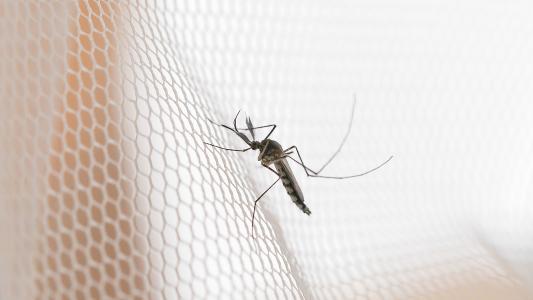A newly described ancient relative to the octopus suggests that these uncanny, alien-looking animals once had ten arms during their early evolution — and it pushes their fossil record back by millions of years.
Discovered by researchers from the American Museum of Natural History (AMNH) and Yale, the new species is a vampyropod. It’s part of the family that includes octopuses and their relatives, the vampire squids (which … aren’t real squids).
When it comes to cephalopods, like the octopus, squid, and cuttlefish, the arm count is an important distinction.
If the fossil is of a new species, it would be the oldest octopus relative found.
“The arm count is one of the defining characteristics separating the 10-armed squid and cuttlefish line (Decabrachia) from the eight-armed octopus and vampire squid line (Vampyropoda),” Christopher Whalen, lead author of the study and postdoc researcher at the American Museum of Natural History, says.
Researchers have known for a while now that octopuses arrived at eight arms when they lost two long appendages unique to the vampire squid. Called filaments, they are analogous to a true squid’s tentacles, which are the long, club-headed limbs.
This fossil provides new, stronger evidence, “arguably the first confirmation of the idea that all cephalopods ancestrally possessed 10 arms,” Whalen says.
Cephalopod in Chief: Making its debut in Nature Communications, the new species was dubbed Syllipsimopodi bideni (yes, as in President Joe Biden). According to Yale, the fossil had fins and 10 sucker-spackled arms for glomming onto its prey.
Living 327 million years ago, the species pushes back our fossil record of vampyropods by a whopping 82 million years.
That there is a fossil to look at at all is a strange, lucky stroke of history, the New York Times explains. It was originally discovered in 1988 in Fergus County, Montana, which was once a bay.
Tropical storms regularly washed freshwater and sediment into the bay, causing algae blooms. The algae devoured the oxygen in some patches of water, and if a creature were to die in these unique circumstances, it could find itself buried and immortalized.
“The probability of these tiny little bags of water turning into fossils is just astronomically low,” Thomas Clements, a paleobiologist at England’s University of Birmingham not involved with the study, told the NYT.
That fossil sat around in a drawer at the Royal Ontario Museum until Whalen took a closer look at its arms under a microscope, spotting suckers.
It’s the oldest cephalopod with sucker arms yet found.
Maybe.
When it comes to octopuses, squids, and their relatives, the arm count is an important distinction.
Controversial suckers: As the NYT reports, not everyone agrees with the researchers that S. bideni represents a new, distant, 10-armed ancestor of our modern octopuses and vampire squids.
University of Zurich paleobiologist Christian Klug believes that the fossil is of a species we already know, Gordoniconus beargulchensis.
“It’s the exact same size, the exact same age, the exact same locality, the exact same proportions and it’s just preserved a little bit differently,” Klug tells the NYT.
The researchers relied heavily on visual observations of the fossil; chemical assays, although expensive, could provide strong answers, Klug says.
Specifically, Whalen was looking for a special shell that ancient cephalopods used to adjust where they are in the water column — the equivalent of a scuba divers’ buoyancy compensator.
That the fossil represents a new species at all is disputed.
Called a phragmocone, it is usually well preserved in fossils, says Whalen — including in fossils of G. beargulchensis. But Whalen didn’t find it in this fossil. Instead, he found evidence of a different type of internal structure called a gladius.
“It’s really not something that anyone expected to see in an animal this old,” Whalen told the Times. “We knew we were looking at an early vampyropod.”
Klug still disagrees, and the dispute highlights paleontology’s long-running difficulty with identifying and classifying squashed ancient animals on the basis of visual evidence.
He thinks that what Whalen is seeing — or not seeing, as the case may be — is a deformed phragmocone and body chamber of a G. beargulchensis. Unsurprisingly, Whalen disputes that, and believes the body measurements of the fossil alone are enough to mark it as a distinct species.
Chiming in from across the Atlantic, Birmingham’s Clements hopes that chemical tests in the future can clear this up, especially if it can prove the existence of those all-important suckers, which are difficult to see — and just who’s the sucker in this spat.
We’d love to hear from you! If you have a comment about this article or if you have a tip for a future Freethink story, please email us at [email protected].






